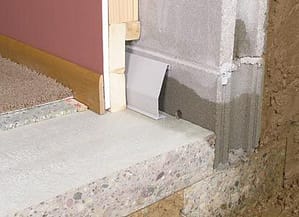Best Basement Waterproofing Fundamentals Explained
Best Basement Waterproofing for Beginners
Table of ContentsEverything about Best Basement WaterproofingBest Basement Waterproofing - The FactsBest Basement Waterproofing - An OverviewEverything about Best Basement Waterproofing
What creates water damage problems in your basement? Pipelines that line the inside of your walls are simply one example of where water damages can take place.The soil and ground of your home is really essential. If there is excessive water surrounding your home, nevertheless, it can push the soil right into your home and cause the seals of your basement to come to be compromised. when you see excess water in position where it must not be, that is a great sign that you have a problem.
Concrete waterproofing coverings are cement-like; as soon as dry, they stick permanently to concrete and stonework wall surfaces. You use the finishing with a hefty brush made with bristles swirled throughout application for an attractive, completed appearance. Concrete water resistant layers can not be used to formerly painted surface areas Silicate-based concrete sealants, also recognized as densifiers, are also suitable only for walls that haven't been painted or sealed.
8 Easy Facts About Best Basement Waterproofing Described
Plastic sheets and panels may be integrated with indoor basement water drainage systems. They do not quit water from getting with the wall surface, however they do quit it from ruining points in the cellar.
A sump pump is required to relocate water out of your cellar. Right here are a few things the professionals can install to help the waterproofing process: this is made for the wall surfaces of your cellar.
Basement waterproofing is an excellent way to get ahead of prospective water damage that may come your way.
Rumored Buzz on Best Basement Waterproofing
When it pertains to safeguarding your home, one of one of the most important actions you can take is basement waterproofing. A completely dry cellar not only guarantees a risk-free and healthy setting for you and your household, yet it also helps to avoid expensive water damages and mold development. In this article, we will certainly go over the value of basement waterproofing, the benefits it gives, and how you can set about protecting your room.

When it concerns cellar waterproofing, there are a number of techniques that can be used to maintain water out of your area. These consist of interior sealers, outside waterproofing membranes, and drainage systems. The very best approach for your cellar will depend on aspects such as the level of water invasion, the problem of your structure, and your budget.
Finally, cellar waterproofing is a critical action in securing great post to read your home from water damage, mold growth, and other issues. By investing in cellar waterproofing, you can make sure that your area stays completely dry, safe, and healthy and balanced for you and your household. Not just does cellar waterproofing supply satisfaction and protection for your home, yet it can likewise enhance its worth and save you cash on power expenses over time.
Unknown Facts About Best Basement Waterproofing
Inside sealers are a kind of cellar waterproofing method that entails applying a sealer to the within the basement walls and floors. Water can leak right into a basement with splits, voids, or porous concrete, specifically in areas where there is high groundwater or bad drainage. This can lead to water damage and mildew development, as well as damages to the foundation and architectural honesty of the structure.

It is an efficient option for stopping water damage and preserving the architectural honesty of the building. It can be pricey and disruptive to install, as it calls for excavation around the structure and may include landscaping and various other repair services once the waterproofing is total. This technique is the most dependable and long-lasting remedy for avoiding water infiltration in the cellar.
Structure fracture injections are a method of repairing fractures in the structure walls from the inside, without excavating the soil around the structure. The process includes infusing a fluid polyurethane or epoxy into the fractures, which after that solidifies and produces a water resistant barrier that stops water from leaking through. This approach is generally utilized for smaller sized splits that do not present an architectural danger, investigate this site and can be completed swiftly and with very little disturbance to the building's passengers.